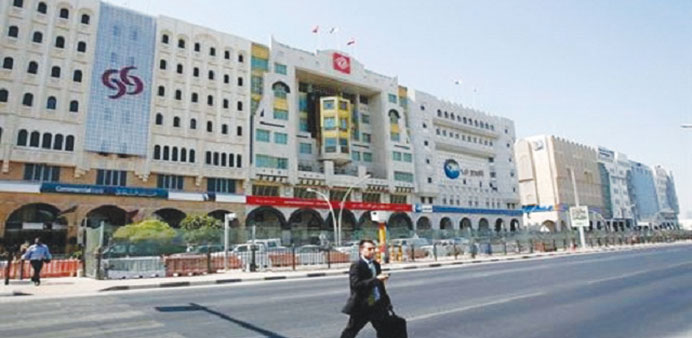|
|
Global credit rating agency Moody’s has stamped “stable” outlook for Qatar’s banking system with credit expected to grow by 20%-25% in the next 12-18 months.
However, asset quality remains exposed to risks stemming from a multitude of factors such as high single party exposures and concerns about banks’ underwriting standards due to rapid credit expansion, it said.
The agency said the “stable” outlook reflects Qatar’s benign economic environment and its expectations that domestic banks will maintain strong financial metrics, including low levels of non-performing loans (NPLs), robust earnings and sound capitalisation.
Moody’s expects that the government’s extensive infrastructure investment programme will boost banks’ business opportunities over the 12 to 18 months outlook period and lead to lending growth of between 20%-25% and said “robust government spending will stimulate the non-oil economy and boost credit growth”.
Real GDP (gross domestic product) will likely expand by 5% in 2013 owing to high public spending that will stimulate the non-oil economy and drive bank lending growth, the report said. Although GDP growth will slow down from the exceptionally high rates of 17.4% per annum during 2006-11, reflecting constant hydrocarbon output from 2011 onwards, Qatar will remain among the strongest growing countries in the GCC.
Qatari banks’ asset quality will be supported by the country’s strong economic environment, the substantial government spending and the sizeable proportion of government-related loans (43% of the total). As such, Moody’s expects that the system’s NPLs will remain at around 2% of gross loans over the next 12-18 months.
The banks’ asset quality though remains exposed to event risk given the high single-party exposures and opaque transparency surrounding local conglomerates, the “still-questionable” commercial rationale for many of the government-related projects financed by the banks, rapid credit expansion, which raises questions about banks’ underwriting standards and ability to manage related risks, and the moral hazard that past government interventions have created.
In addition, the banks’ still-high dependence on short-term foreign-market funding leaves banks vulnerable to market conditions.
Finding that the system’s Tier 1 ratio will likely trend down to 15%-16% by end-2013, as banks continue to finance their fast-growing balance sheets domestically and abroad.
Moody’s found that projected capitalisation metrics are sufficient to absorb losses and remain above the regulatory minimum of 10% even under the rating agency’s “adverse” scenario, which considers the impact of a sustained drop in oil and gas prices and significant contraction in economic activity.
Expecting that Qatari banks’ 2013 bottom-lime profitability metrics will remain broadly stable, with the return-on-average-assets ratio ranging between 2.2% to 2.4%, Moody’s said:
“We expect that profitability and efficiency metrics will remain strong. Increased business generation and loan volumes will lead to higher revenues, offsetting the reduction in interest-rate margins; low provisioning requirements and efficient cost bases will also support profitability.”
However, the banks’ net interest margins will likely decline, due to the regulator’s imposition of interest-rate caps on retail lending and banks’ increased exposure to lower-yielding project finance lending.
But operating profitability will be supported by credit growth of 20%-25%, which will offset the impact from reduced interest margins, according to Moody’s.
Expecting no major fundamental changes in the banks’ funding structure over the next 12-18 months, it said customer deposits will continue to dominate banks’ funding bases, at 70% of total funding in December 2012, whilst a sizeable portion of these deposits will continue to be sourced from government and government-owned entities, at 27% of total funding (or 39% of deposits).
Over the past few years – as lending growth gained traction and demand for foreign-currency lending has grown – Qatari banks have increased their dependence on foreign borrowing, having attracted funds from international banks but also from their overseas operations, it said, adding their increased exposure to foreign funding, part of which comes from Europe, leaves them vulnerable to conditions in the euro area and raises refinancing risks.
“A deepening of the euro area debt crisis could tighten global liquidity and potentially obstruct access to foreign funding. This scenario could raise the banks’ funding costs and could delay their funding growth plans,” it said.
Under these conditions however, Moody’s noted that the government may “potentially redirect” some of its offshore assets back into the Qatari banking system.

